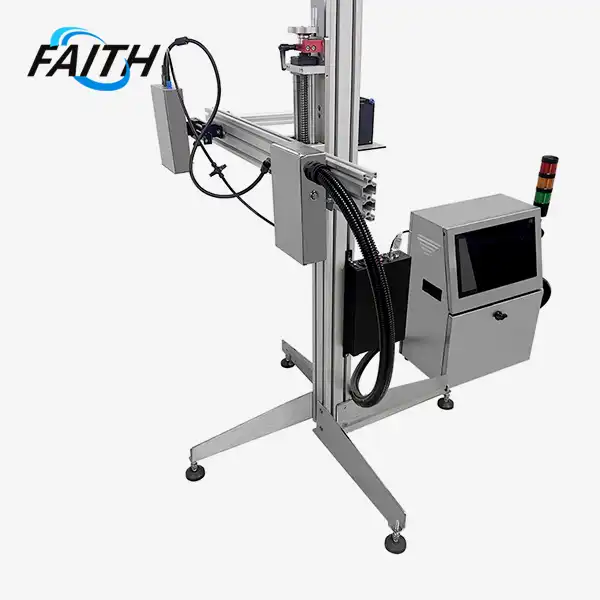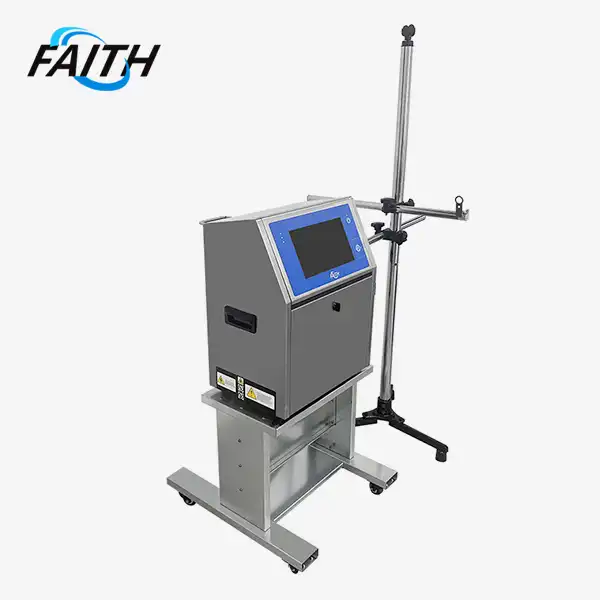How Piezo-Inkjet PIJ Printers Enhance Food Packaging Efficiency?
In the fast-paced world of food packaging, efficiency is paramount. As industries strive to meet growing consumer demands and stringent regulatory requirements, innovative technologies like Piezo-Inkjet PIJ printers have emerged as game-changers. These advanced printing systems are revolutionizing the way food packaging is marked, coded, and tracked, offering unprecedented levels of precision, speed, and versatility.
Piezo-Inkjet PIJ technology has swiftly become a cornerstone in the food packaging industry, addressing longstanding challenges and opening new avenues for productivity. By harnessing the power of piezoelectric crystals, these printers deliver high-quality, high-speed printing that meets the exacting standards of modern food production lines.
The Technological Marvel of Piezo-Inkjet PIJ Printers
At the heart of Piezo-Inkjet PIJ printers lies a sophisticated mechanism that sets them apart from traditional printing methods. The piezoelectric effect, discovered over a century ago, forms the foundation of this cutting-edge technology. When an electric current is applied to certain crystals or ceramics, they change shape, creating a precise mechanical deformation. In PIJ printers, this principle is ingeniously applied to eject ink droplets with remarkable accuracy.
The printer's printhead houses an array of tiny chambers, each containing a piezoelectric crystal and ink. When a voltage is applied, the crystal flexes, creating a pressure wave that forces a droplet of ink through the nozzle. This process occurs at astonishing speeds, with thousands of droplets ejected per second, allowing for high-resolution printing at industrial speeds.
What truly sets Piezo-Inkjet PIJ printers apart is their ability to handle a diverse range of inks. From water-based to solvent-based and even UV-curable inks, these printers offer unparalleled versatility. This flexibility is crucial in the food packaging industry, where different substrates and environmental conditions demand specific ink formulations.
Moreover, the anti-precipitation technology integrated into modern PIJ systems ensures consistent print quality even with pigmented inks like white, which are notorious for settling. This innovation maintains printing quality and simplifies the maintenance process, reducing downtime and extending the intervals between cleaning cycles.
Elevating Food Packaging Efficiency with PIJ Technology
The food packaging industry operates on razor-thin margins and tight schedules. Every second counts, and any disruption can have cascading effects on production and distribution. Piezo-Inkjet PIJ printers address these challenges head-on, offering a suite of features that significantly enhance operational efficiency.
One of the most impactful advantages is the one-key emptying function. When switching between different ink types or preparing for extended shutdowns, operators can quickly and easily empty the ink path. This feature not only facilitates rapid changeovers but also simplifies maintenance procedures, reducing the time and labor involved in printer upkeep.
The fully automatic valve control technology, utilizing Japanese CKD valve groups, effectively eliminates ink leakage issues. This not only prevents waste but also ensures a cleaner, safer working environment. The precision of this system contributes to consistent print quality and reduces the need for manual interventions, allowing production lines to run smoothly for extended periods.
Furthermore, the intelligent ink management system allows for ink refilling without halting production. This "on-the-fly" refilling capability ensures that printers maintain optimal working conditions without interrupting the packaging process. It's a small feature with significant implications for overall line efficiency, especially in high-volume production environments.
The precise ink squeezing control is another noteworthy feature that extends the lifespan of printer nozzles. By accurately managing external positive pressure, this function prevents premature wear and tear on critical components. The result is reduced maintenance frequency and lower long-term operational costs.
Enhancing Traceability and Quality Control in Food Packaging
In an era where food safety and traceability are non-negotiable, Piezo-Inkjet PIJ printers play a crucial role in meeting regulatory requirements and consumer expectations. The high-resolution printing capabilities of these systems allow for the application of detailed batch codes, expiration dates, and even complex QR codes directly onto packaging materials.
The ability to print clear, durable codes on a wide variety of substrates - from flexible films to rigid containers - ensures that vital information remains legible throughout the supply chain. This enhanced traceability not only aids in regulatory compliance but also provides valuable data for inventory management and potential recall situations.
Quality control is further bolstered by the fault detection and early warning systems integrated into advanced PIJ printers. These systems continuously monitor printer performance, alerting operators to potential issues before they escalate into production-halting problems. By enabling proactive maintenance and rapid troubleshooting, these features minimize the risk of unexpected downtimes and maintain consistent print quality.
The precision of Piezo-Inkjet technology also contributes to reduced waste in packaging operations. The ability to print small, high-resolution text and graphics allows for more efficient use of packaging materials, potentially reducing the overall environmental footprint of food packaging processes.
As sustainability becomes an increasingly important consideration in the food industry, the versatility of PIJ printers in handling eco-friendly inks opens up new possibilities for environmentally conscious packaging solutions. Water-based and low-VOC ink options can be seamlessly integrated into existing production lines, helping companies meet their sustainability goals without compromising on print quality or efficiency.
Conclusion
In conclusion, Piezo-Inkjet PIJ printers have emerged as indispensable tools in the quest for greater efficiency in food packaging operations. By offering unparalleled printing precision, versatility, and intelligent features, these systems address the multifaceted challenges faced by modern food packaging facilities. From streamlining production processes to enhancing traceability and supporting sustainability initiatives, PIJ technology is helping to shape the future of food packaging.
As the industry continues to evolve, the role of advanced printing technologies will only grow in importance. Companies looking to stay ahead of the curve and optimize their packaging operations would do well to explore the transformative potential of Piezo-Inkjet PIJ printers. For more information on how these innovative solutions can benefit your food packaging processes, don't hesitate to reach out to our team of experts at sale01@sy-faith.com.
References
1. Johnson, M. E., & Whang, S. (2002). E‐business and supply chain management: an overview and framework. Production and Operations management, 11(4), 413-423.
2. Yam, K. L., Takhistov, P. T., & Miltz, J. (2005). Intelligent packaging: concepts and applications. Journal of food science, 70(1), R1-R10.
3. Vanderroost, M., Ragaert, P., Devlieghere, F., & De Meulenaer, B. (2014). Intelligent food packaging: The next generation. Trends in Food Science & Technology, 39(1), 47-62.
4. Calvert, P. (2001). Inkjet printing for materials and devices. Chemistry of materials, 13(10), 3299-3305.
5. Lee, H. J., Joyce, M. K., & Fleming, P. D. (2005). Influence of pigment particle size and pigment ratio on printability of glossy ink jet paper coatings. Journal of Imaging Science and Technology, 49(1), 54-61.
Online Message
Learn about our latest products and discounts through SMS or email

_1732604879905.webp)
_1732518153380.webp)

